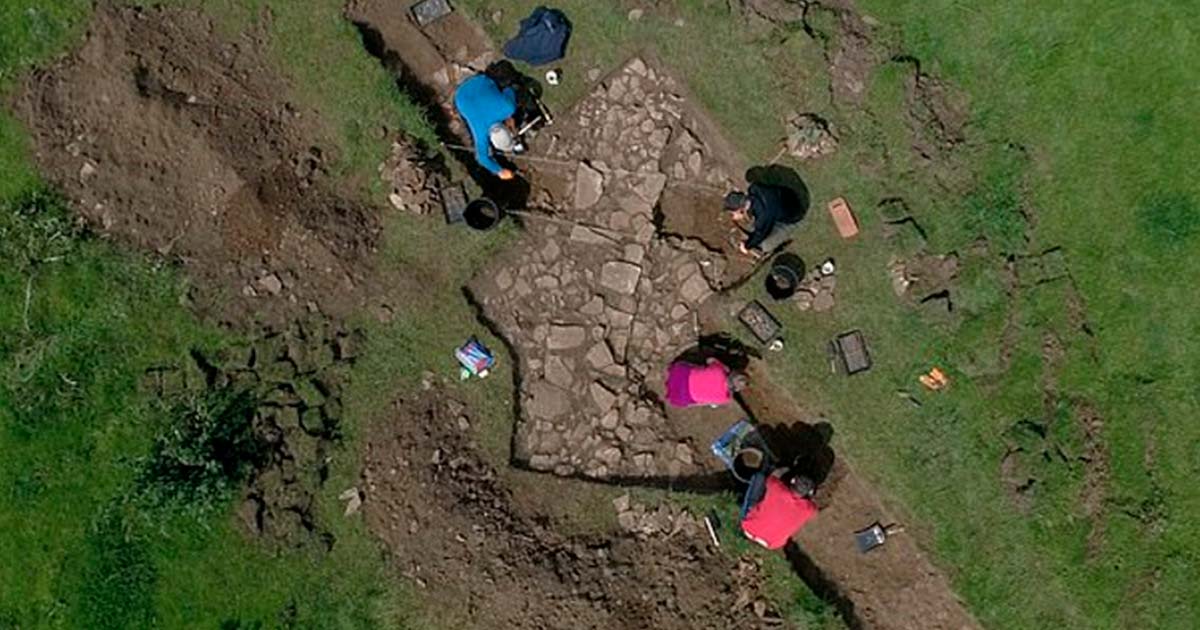A Lost Royal Palace in England Linked to Henry VIII Discovered by ‘A Bunch of Amateurs’
A group of amateur historical sleuths have spent the best part of the last decade searching the English countryside for a long-lost Tudor palace, that was famously visited by Henry VIII. Now they claim to have found the legendary royal structure, at an undefined location around the village of Collyweston.
Located in Northamptonshire, Collyweston is a quintessential English village, in a region that is celebrated for its unique, ‘Collyweston’ limestone slate. Embedded with fossils, this hard stone has a characteristic blue-gray hue, and it has been quarried in this region since medieval times.
The surrounding countryside offers visitors scenic walks in tranquil rural spaces, and for many centuries locals have shared stories about a lost royal palace belonging to Lady Margaret Beaufort, the grandmother of Henry VIII. But now, a self-proclaimed “bunch of amateur historians” claim to have found the long-lost Tudor palace.
- How Henry VI Genetically Engineered Henry Tudor for the Throne
- Bess of Hardwick: The Second Wealthiest Woman In Tudor England

Lidar shows a series of ornamental ponds, terraced gardens and drainage channels around the village of Collyweston. (CHAPS)
Delving into a Royal Seat
An article in The Telegraph explains that after almost a decade of research, including many landscape surveys and site excavations, the Collyweston Historical and Preservation Society (CHAPS), have identified “a series of underground structures.” They are convinced they have found the palace of Lady Margaret Beaufort, mother of Henry VII and grandmother to Henry VIII.
- The Complicated and Disturbing Life of King Henry VIII
- Bloody Mary: Tumultuous Beginnings for a Future Queen of England

Left, Portrait of King Henry VIII, (Hans Holbein,1534-36) (Richard Mortel/CC BY 2.0). Right, Portrait of Lady Margaret Beaufort by Meynart Weywyck (Meynart Weywyck/CC BY-SA 4.0)
Lady Margaret Beaufort, born in 1443 AD, was the founder of the Tudor dynasty, the mother of Henry VII, and a central figure in the Wars of the Roses. Margaret dedicated her life to philanthropy and education, and her support for her son in the 1485 Battle of Bosworth led to his victory, which ended the war and saw Henry VII becoming the first monarch of the Tudor dynasty.
The newly discovered site was visited by both Henry VIII, and his daughter, Elizabeth I. And later, Henry VIII described the palace as being “fit and neate for a Kynge”.

Researchers excavating at the site of the Tudor palace at Collyweston. (CHAPS)
Not Bad For a Bunch of Amateurs
Chris Close, the chairman of CHAPS, told Daily Mail that a lot of people have resonated with how “a bunch of amateurs in a historical society have found a palace.” Furthermore, they did so with “very little funding and resources.”
Close added that many of the group members recalled stories of the lost palace, “and they wondered what it looked like, who lived in it and why it was there.” In conclusion, Close said “It’s not every day you get the chance to find a royal palace.” And especially one that served as the Midlands administrative center.

Photos of the walls unearthed earlier this year. (CHAPS)
A Huge Network of Buildings
Mr. Close said Collyweston Palace, also known as Collyweston House, would have been “made up of a large network of buildings situated to the west of High Street.” He referred to historical records which say the palace measured “one thousand paces in area,” and when functional, its grand hall, jewel tower, extensive accommodations, and guard houses, could have hosted several hundred guests.
Mr Close said the discovery is something Stamford and the surrounding areas should be “really proud of.” He said that it was from this royal building that “the whole of the country was run by privy councils.” However, because the structures were discovered beneath the grounds of seven private properties in the village, to protect the homeowners, its exact location is being kept under wraps.
After Lady Margaret’s death on June 29, 1509 AD, later that year, Collyweston Palace was passed back into the hands of the crown, and it was later bequeathed to Henry’s second wife, Anne Boleyn. It was in the hands of the Tryon family when it fell into disrepair in the 17th century. Now, The Henry on Tour project, led by Historic Royal Palaces and researchers from the Universities of York and Newcastle, will be working with CHAPS, to discuss how best to steer the discovery.
Top image: Walls of the royal Tudor palace at Collyweston being excavated. Source: CHAPS
By Ashley Cowie
References
CHAPS, 2023 ‘Collyweston Palace has been found!’, Available at: https://www.collywestonhistoricalsociety.org.uk/collyweston-palace?fbclid=IwAR0bR0dis7NioTAMhKDTkilfzpJYEgJrwahZ6KO9PA8n7Kf5JlHVxVCmyhE

















